Archive
2021
KubaParis
An Intricate Well
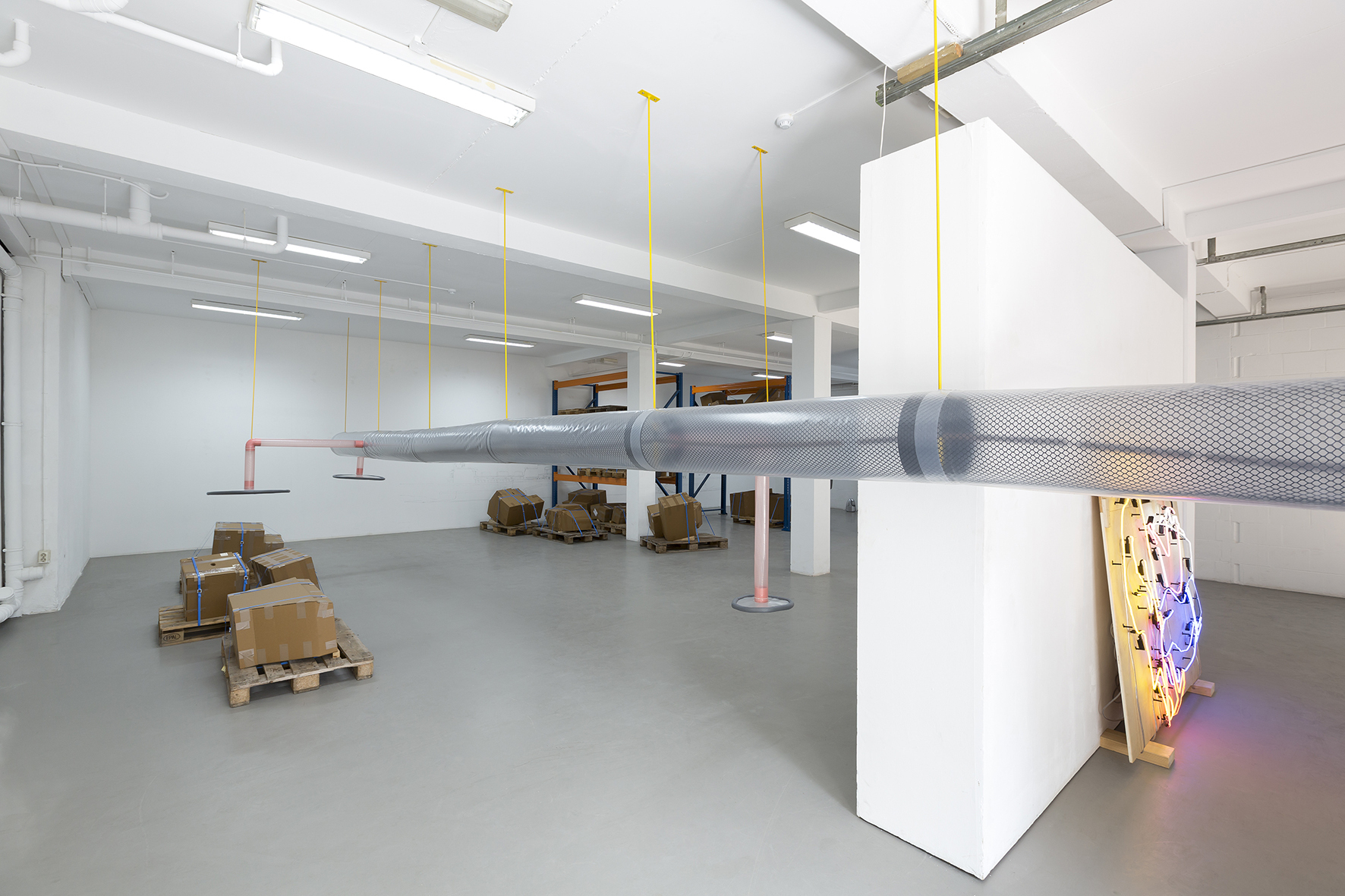
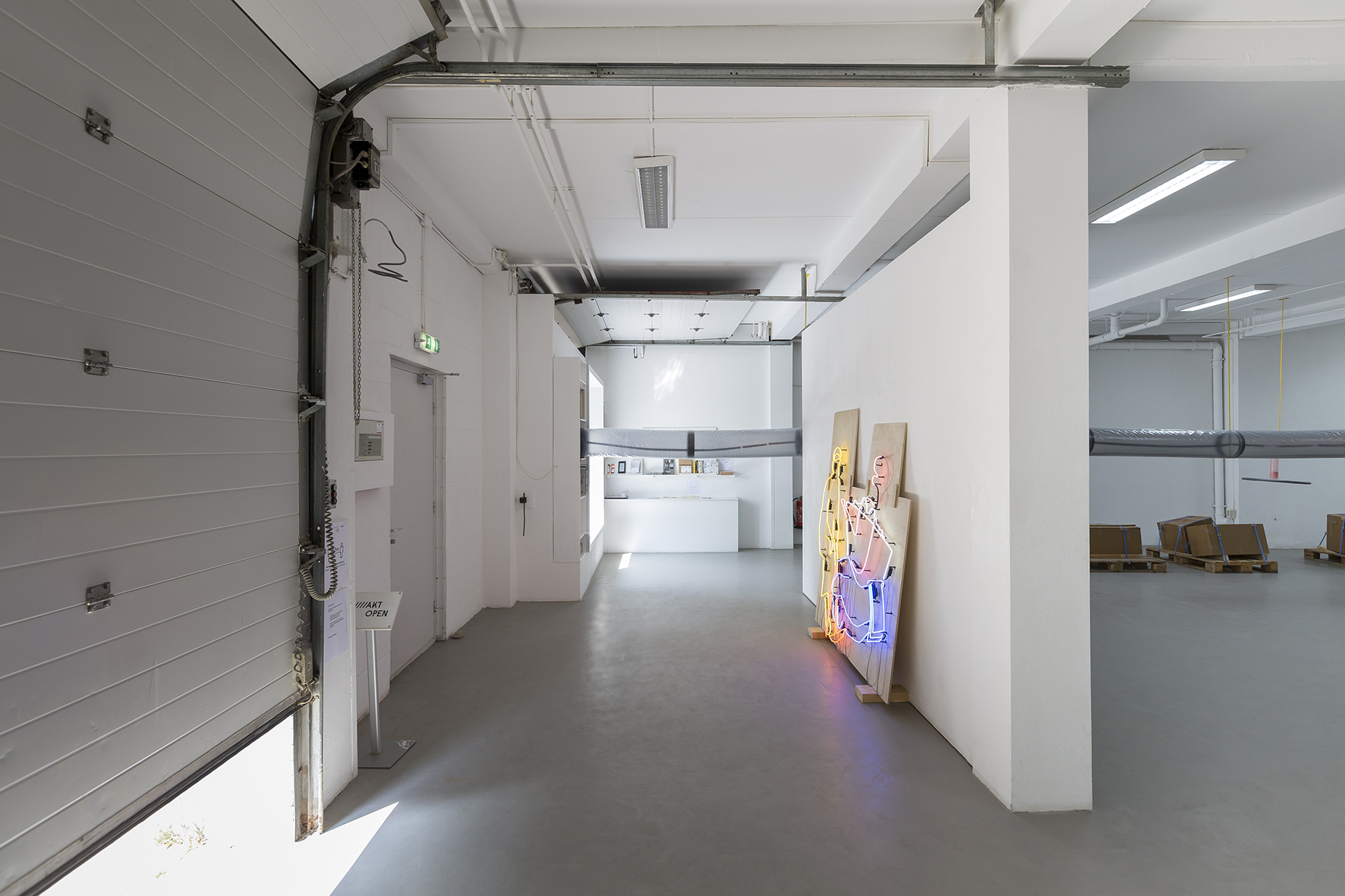


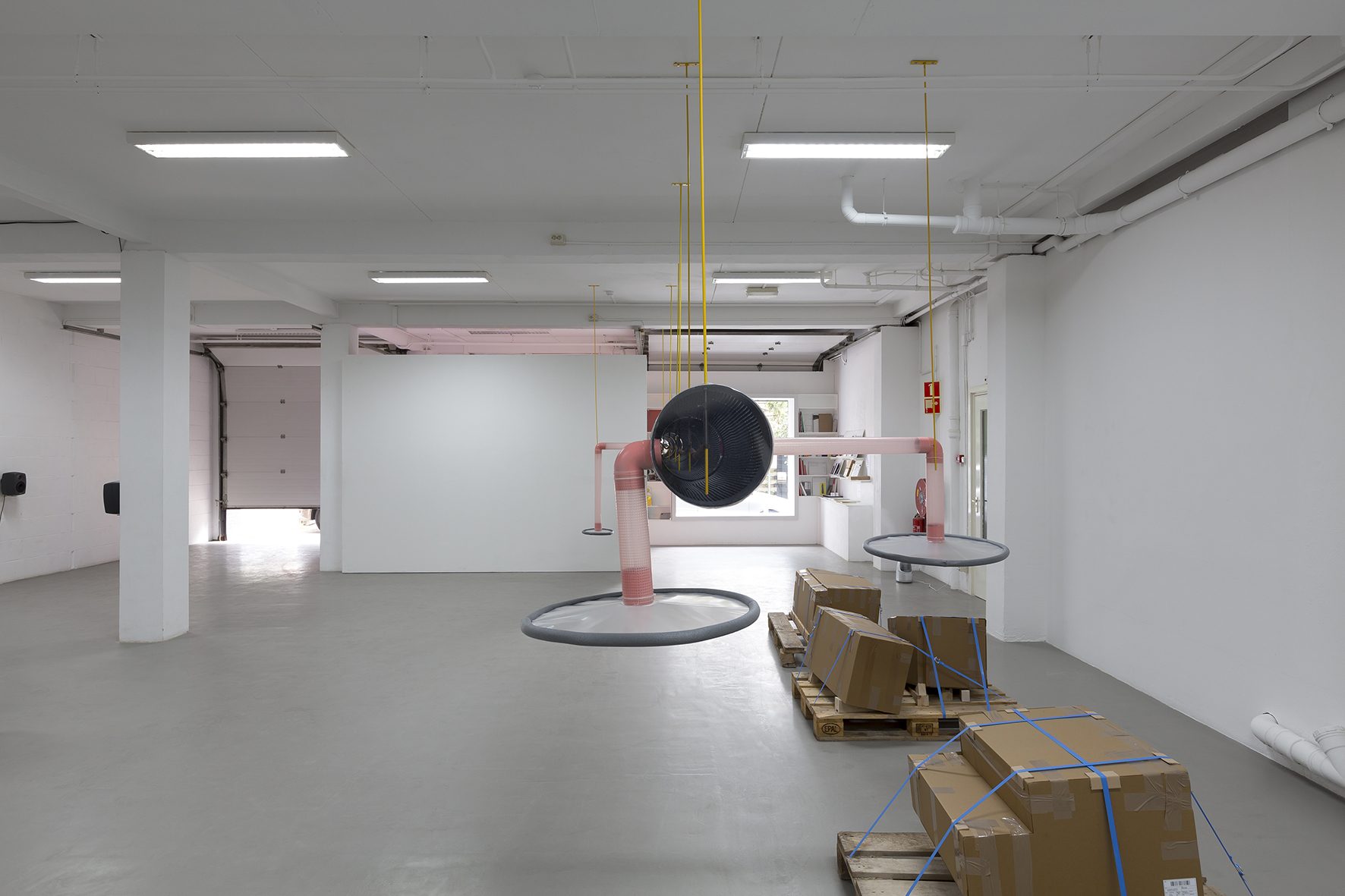
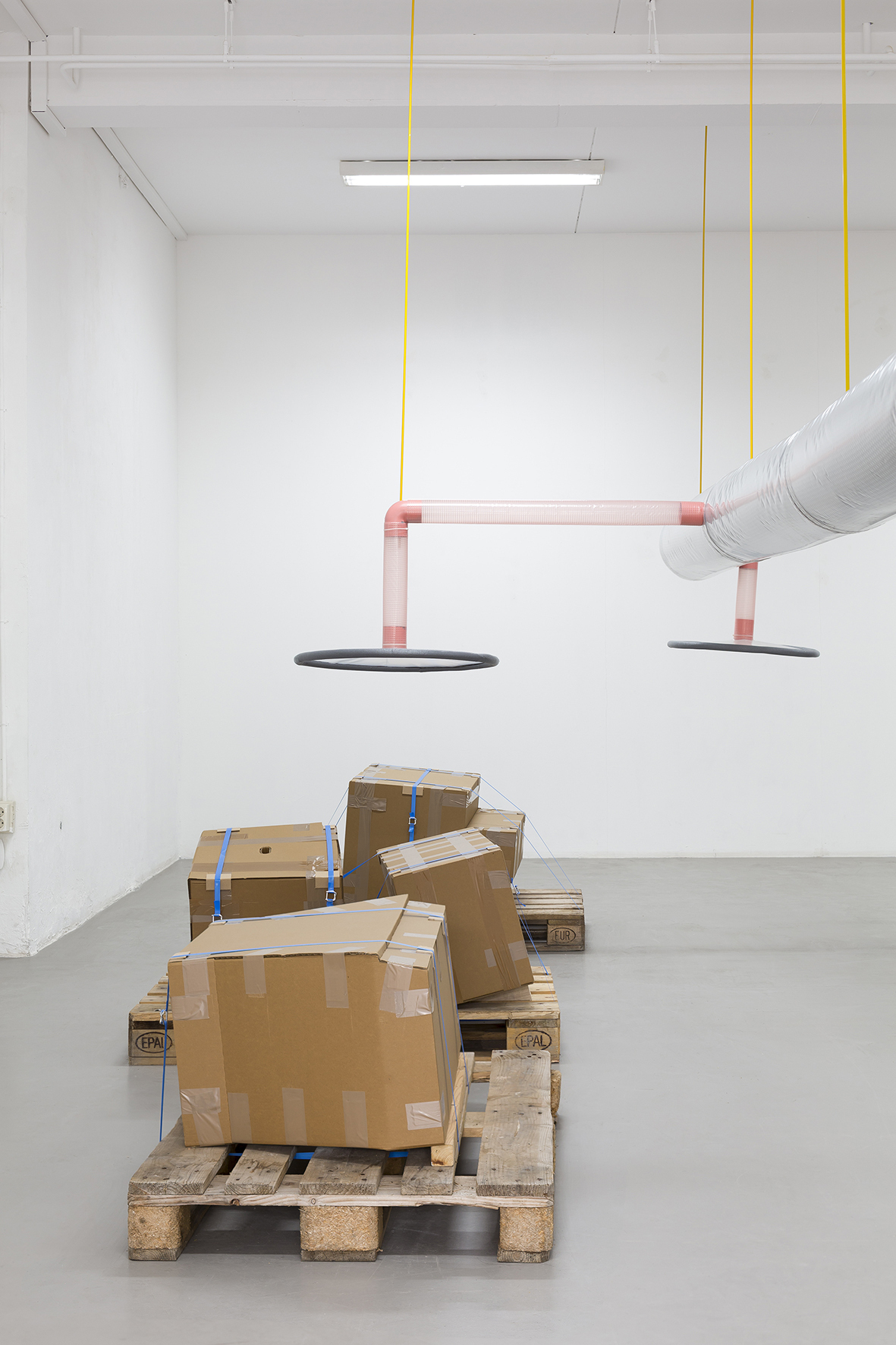
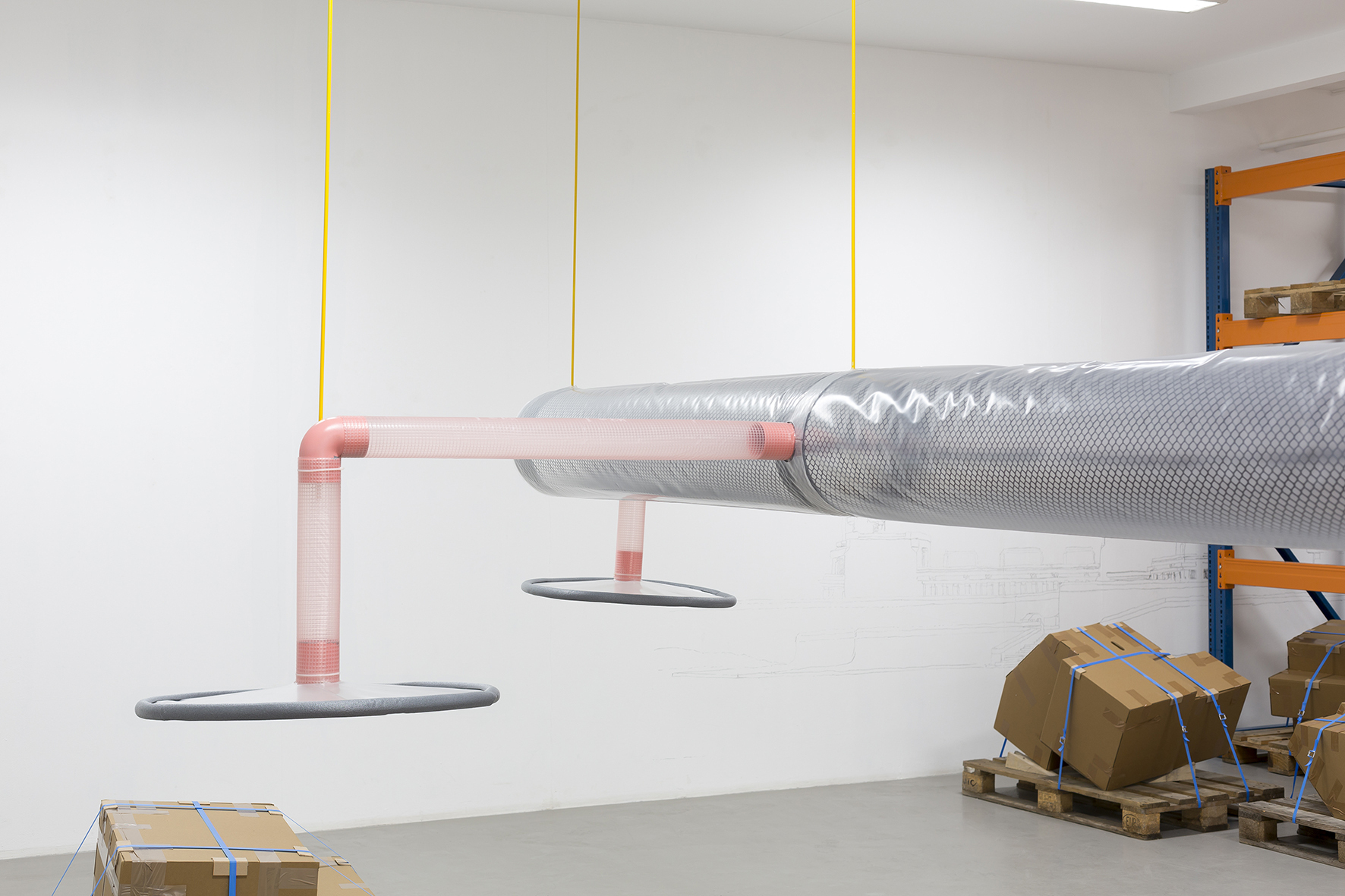
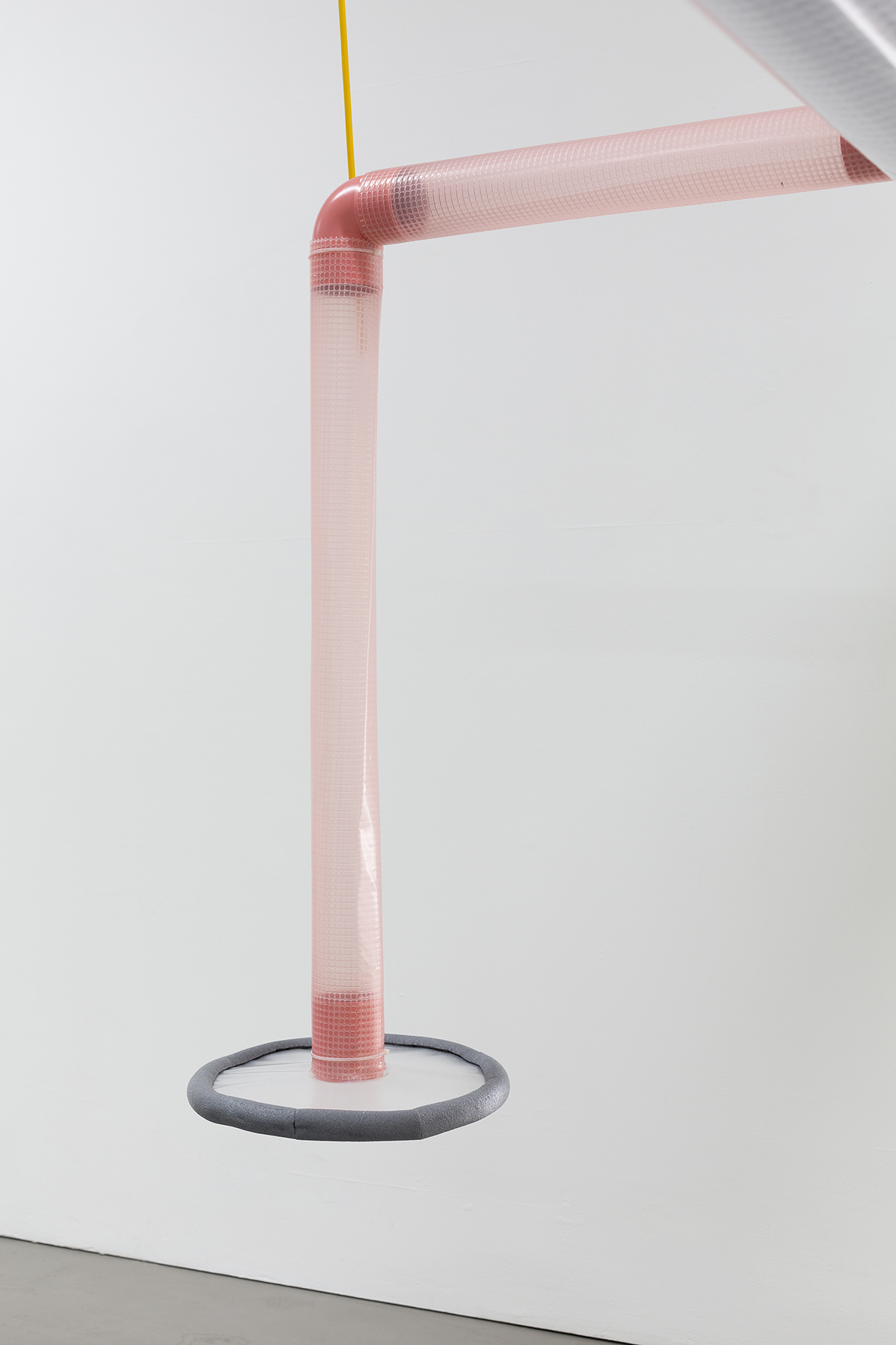
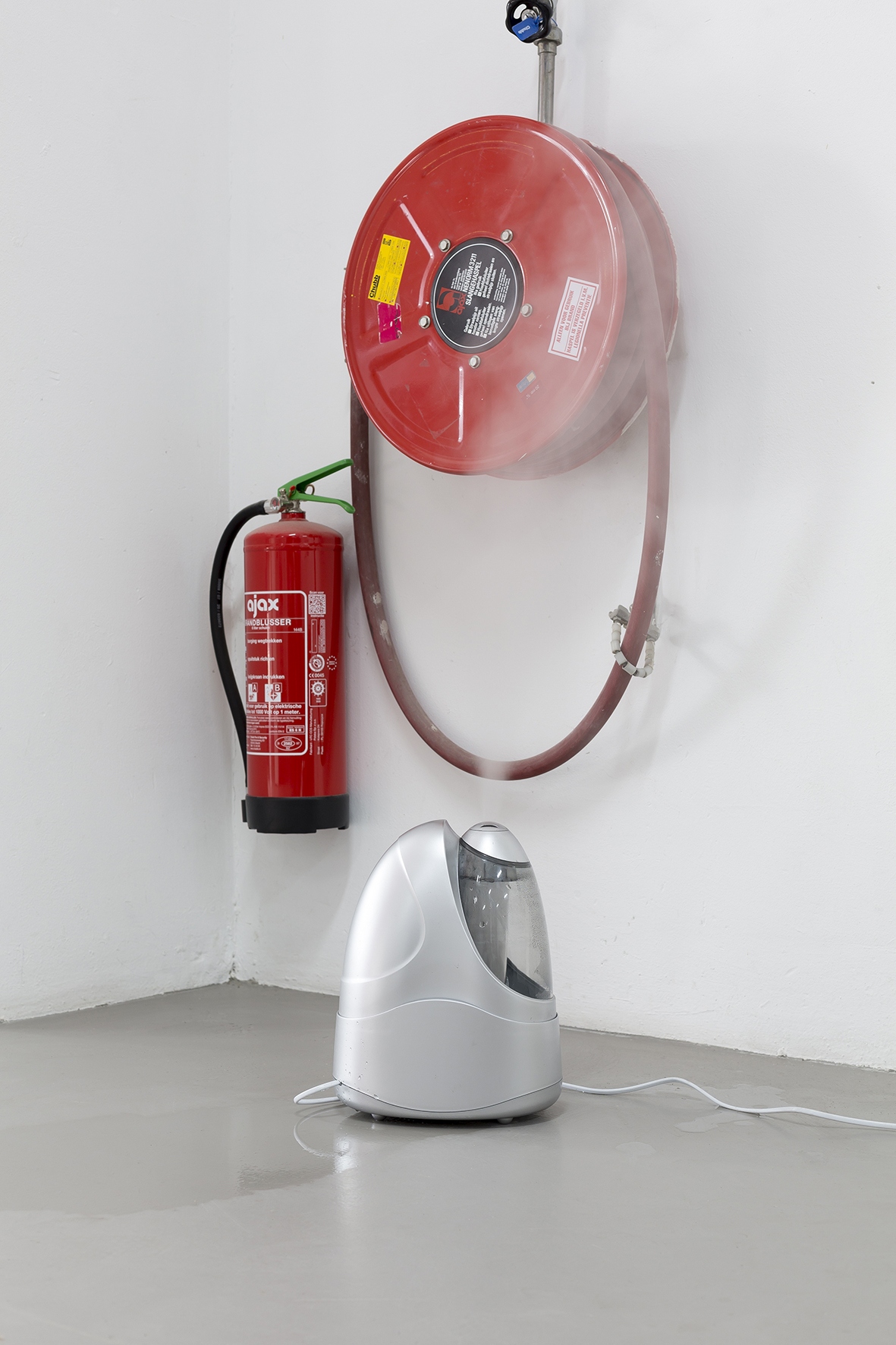
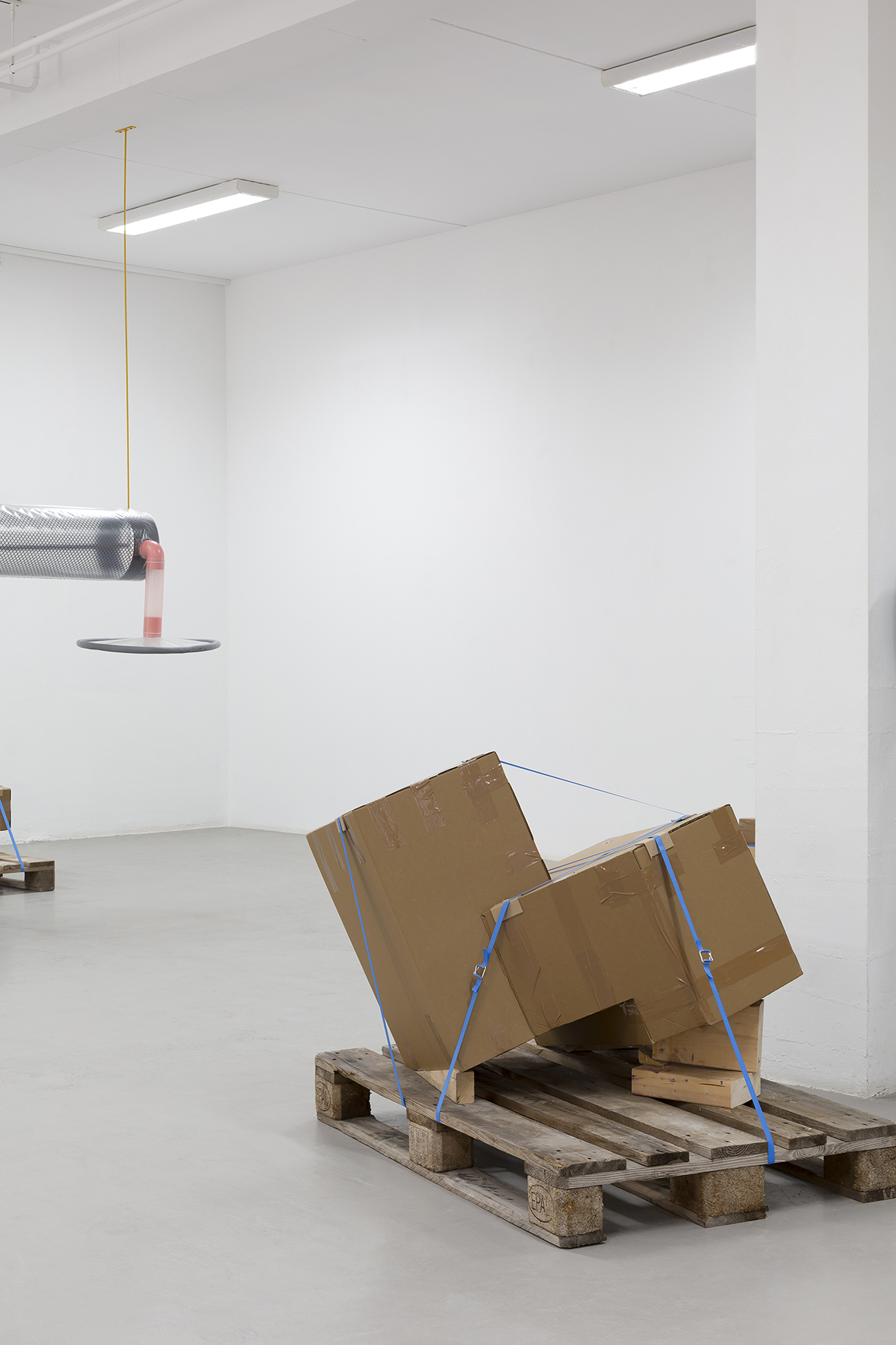
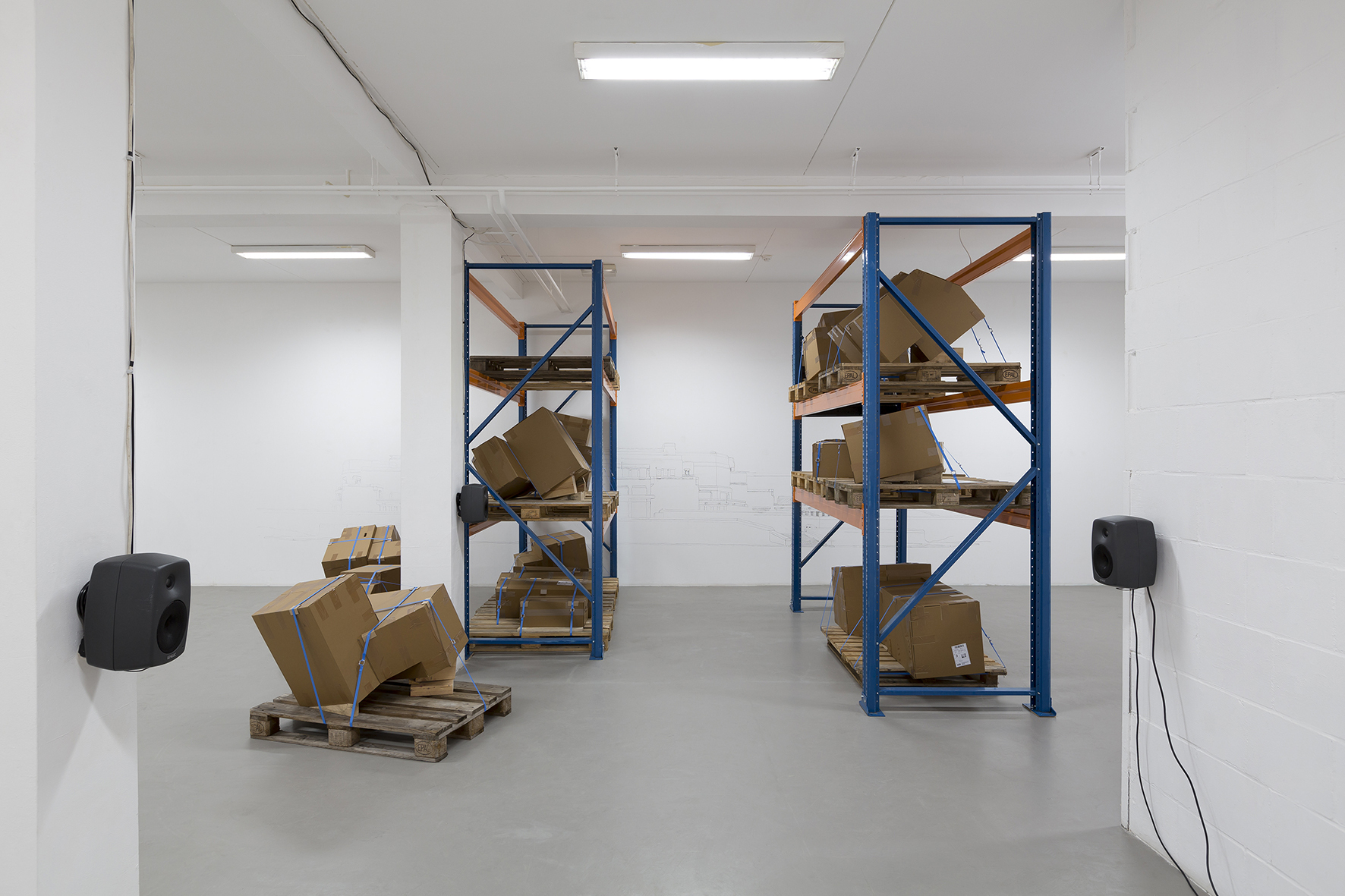
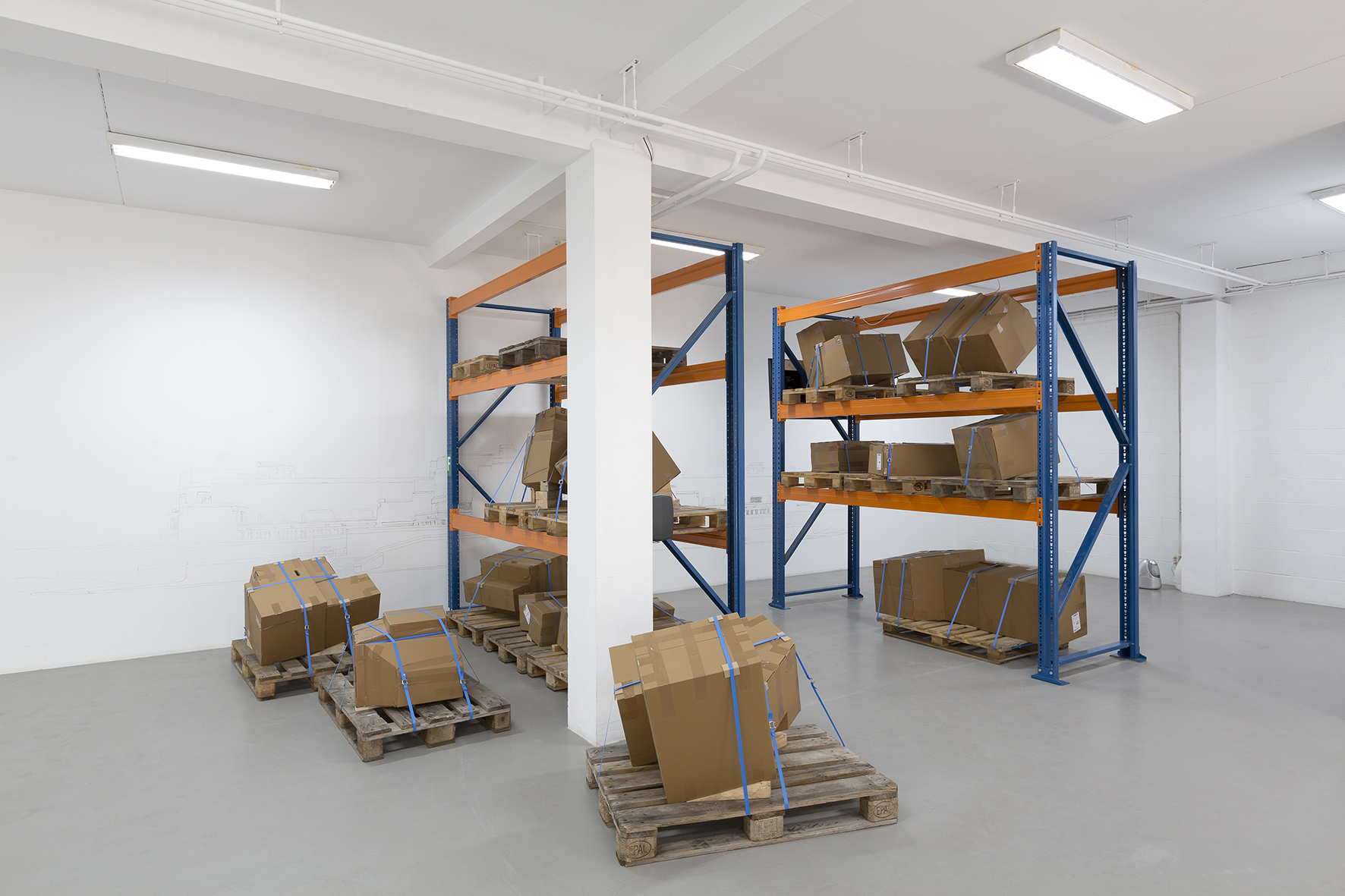
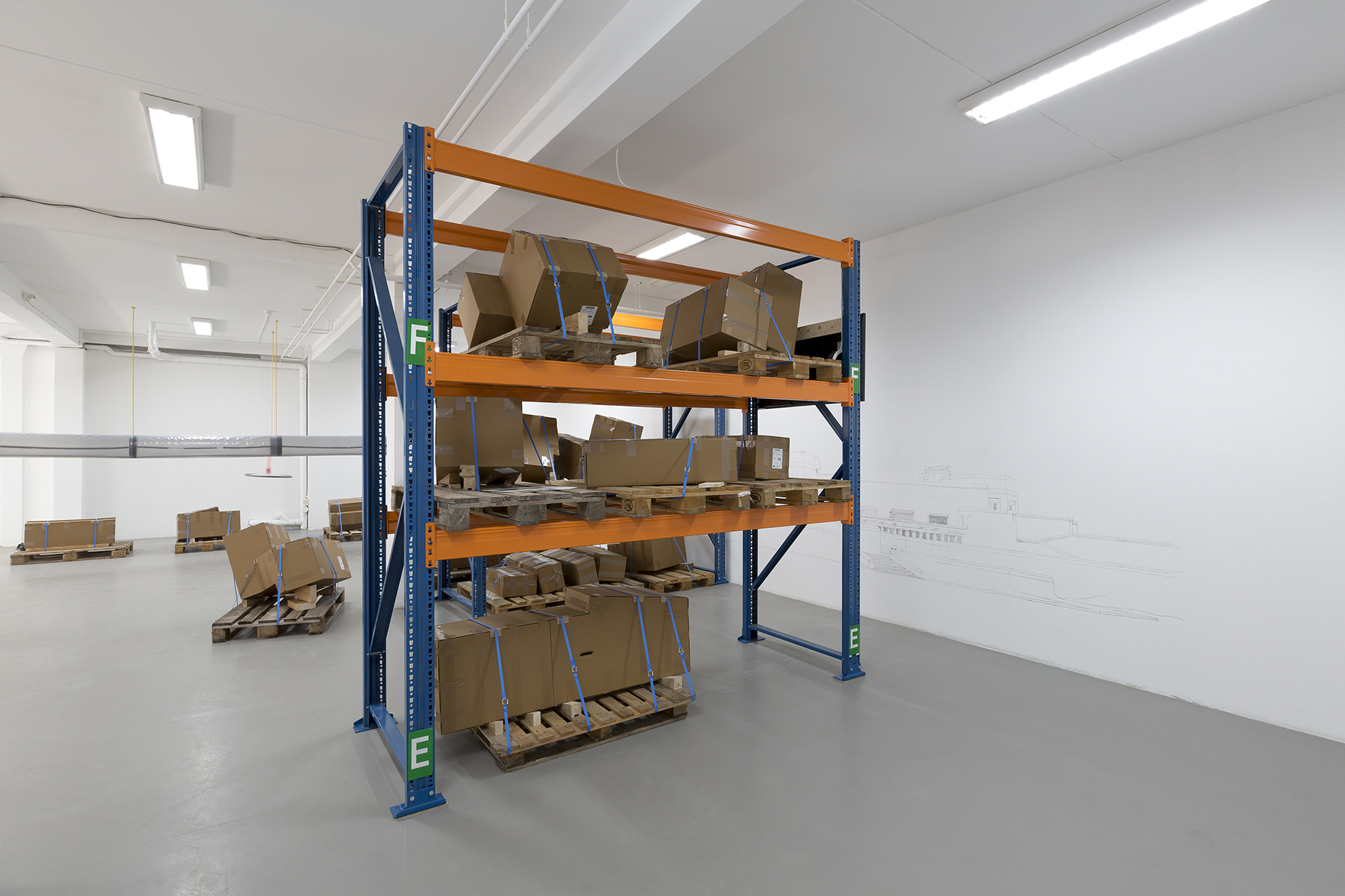
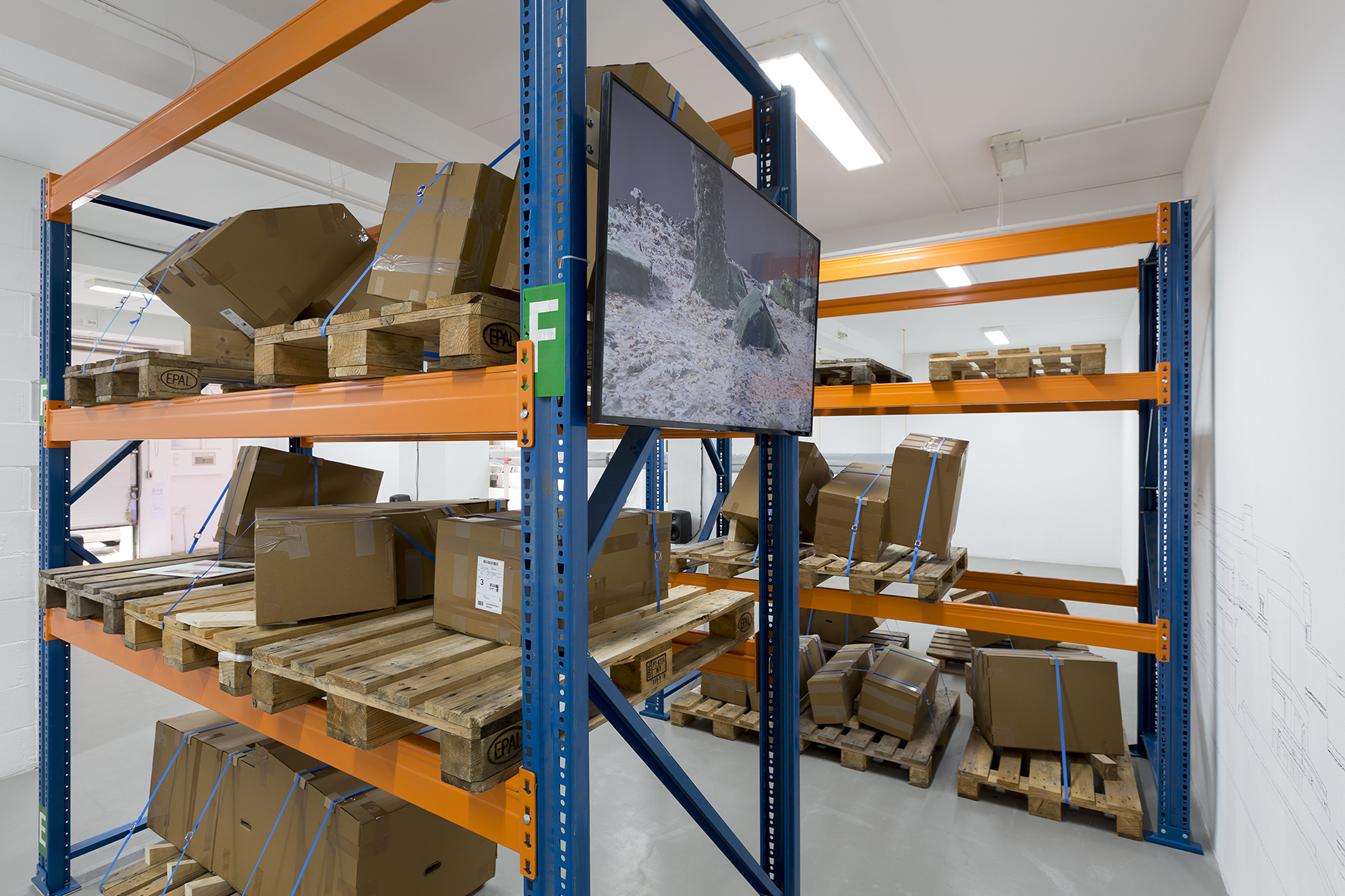

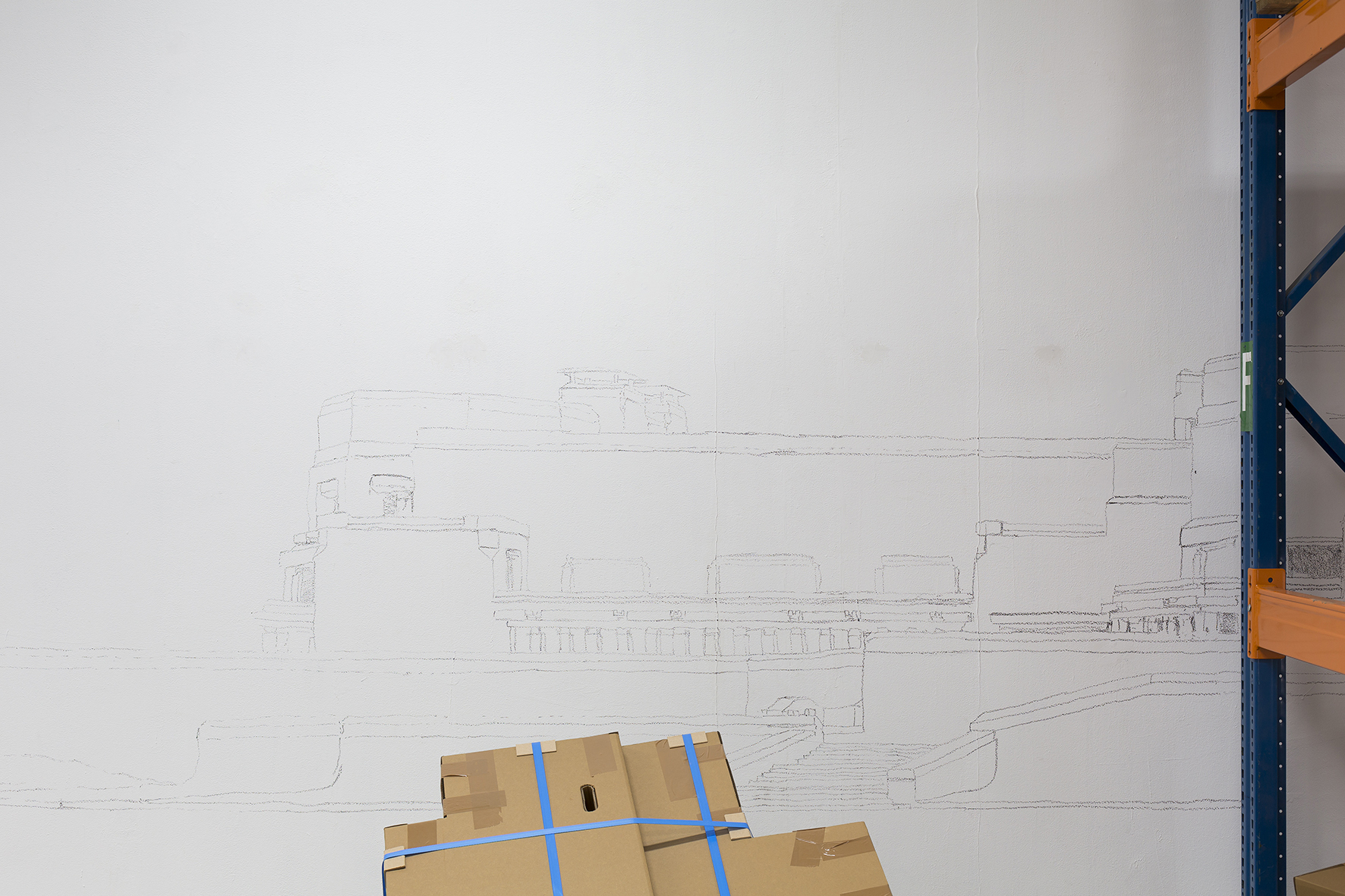
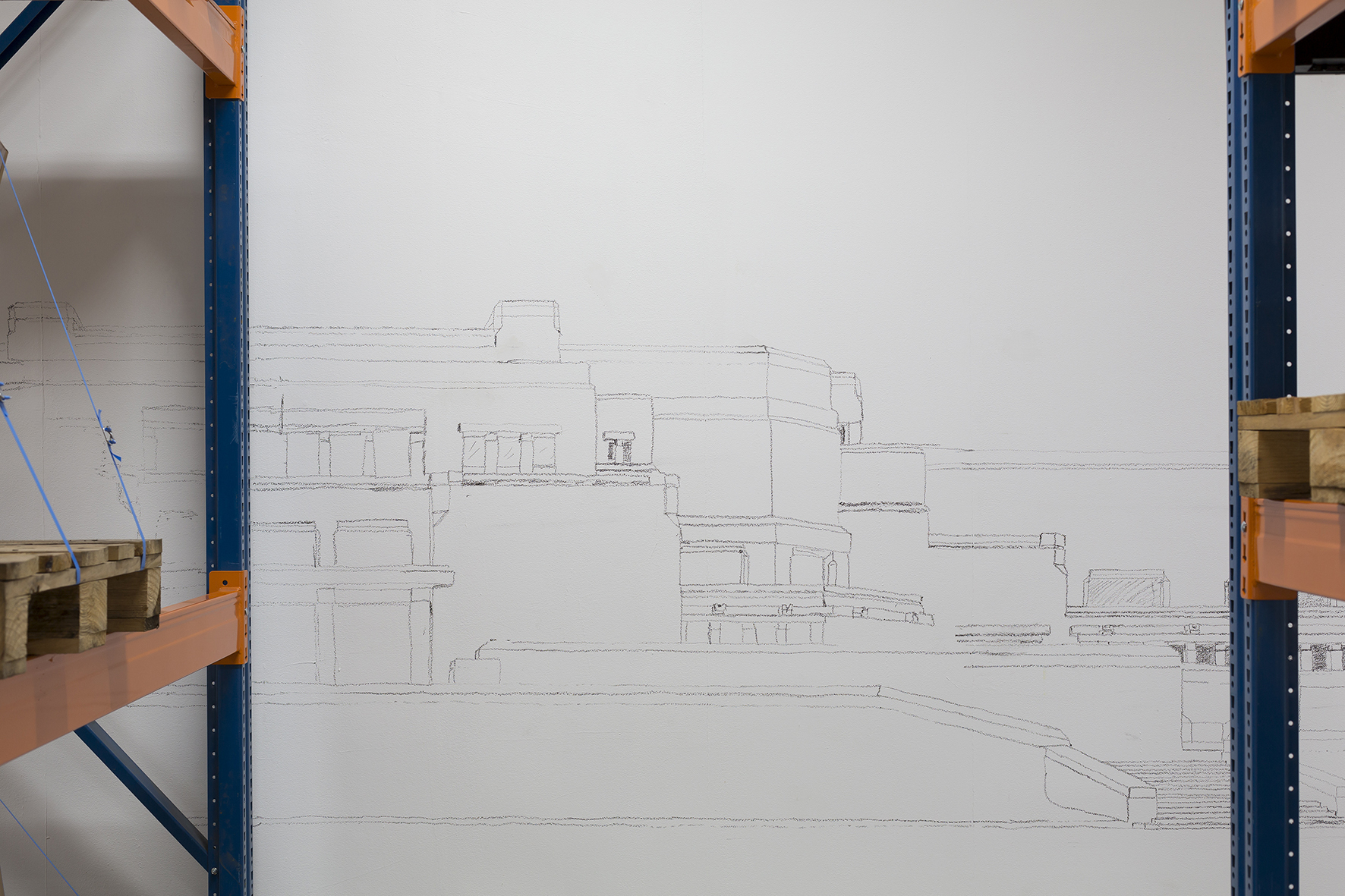

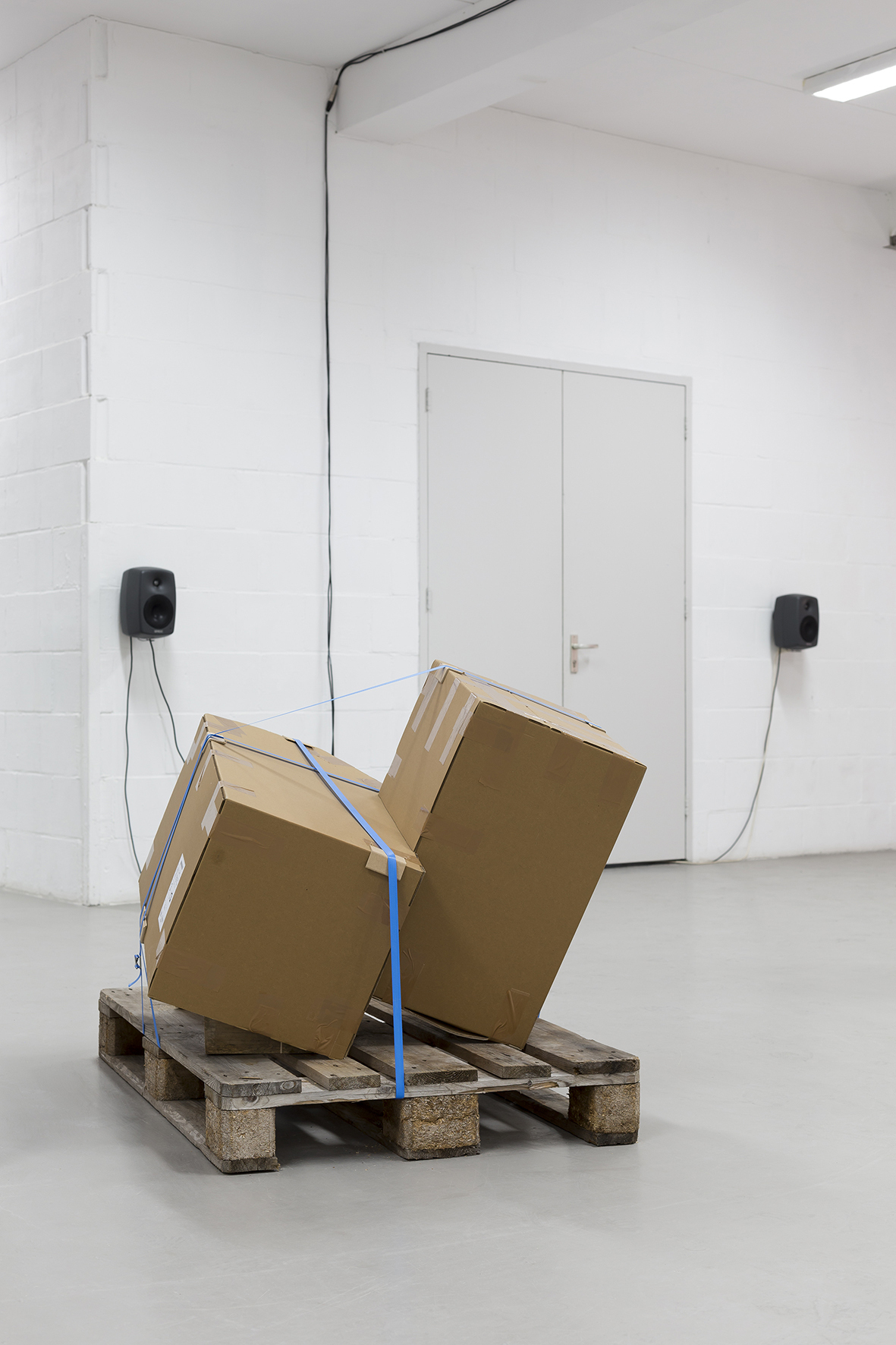
Location
P/////AKTDate
09.07 –14.08.2021Curator
P/////AKTPhotography
Charlott MarkusSubheadline
Am I an Object, part IIText
Nicola Arthen
An Intricate Well
Am I an Object, part II
10 July - 15 August 2021
Thursday – Sunday, 14-18 hrs
Less than 70 kilometres from here is a landscape that contains several ready-hewn building blocks from red sandstone that arrived there a hundred years ago.
Titled FOLDERS_, their bodies have entered this exhibition space in the form of modern logistics—the kind of containers you would expect most of the products that travel this world currently are housed in. The surface of brown, recycled mate- rial, the wavy, sandwiched layers of paper, slightly dented corners, tapes and straps, labels to be read by devices or with a particular knowledge. It is the ubiquity of these containers which makes them a language, obscuring the complexity the supply chains that materialise them. Instead they appear familiar and basic, almost dull. We know what to expect and what diverts from expectation—these building blocks of the landscape require an odd grammar in this language.
Recurved Rock-Bristle is a type of moss. It did not exist in the biosphere registers of the Netherlands until a hundred years ago, when it was first discovered on the surface of these building blocks. Moss is attracted to sandstone and this one may have been a blind passenger that came along from Maulbronn which is in the South-West of Germany. It came via train tracks that were laid especially for its arrival.
As the travel of this moss, unintended by the people that transported it, shows: transmission is inherent to any form of logistics. Transport, transmission, extraction, cutting, unearthing, liberating, displacing, orientation, patterning, containing, exhaustion. When displaced, those involved in the movement affect each other, eventually producing novelty.
An architect was also attracted to the same sandstone like the moss as its red colour was of the kind of the flowers he observed on the heath where a museum would have to be built. A museum is not a container, maybe more a circumscription of a space with a particular meaning. The museum which the famous architect would have had built, would be like a ship in the sandy waves of the Hoge Veluwe—which was a fitting image as it was ships that brought in the ore that was traded for money to build the museum and buy artworks. The ore came from Chile and from Algeria, and the Netherlands must sure have felt like a distant place for the people that mined the ore. For moments, their hitting of the rock may have been in sync with the people who hit the stones in Maulbronn shaping the building blocks for the museum according to the plans of the architect.
Through a process called “tunnelling” that required the Dutch state to step in and ultimately buy the art collection and the land of the planned museum, the project of the building as the architect had envisioned it, broke apart. The idea of that building, however, exists today in the form of the stone blocks that have sunken into the landscape—objects of intention, without a dedicated meaning.
Nicola Arthen is an artist based in Amsterdam and London. His practice is an investigation into the mutual relations between objects’ and humans’ capacities, a negotiation between site and experience. He is interested in the dilemma that occurs in things entering an art space. By isolating artefacts in their peripheral state and turning them into protagonists, he is invested in their stories, struggles and unique qualities, as well as the poetics and politics of labour to reproduce these. He focuses on unexpected encounters in systems of standardisation—the trace of an individual’s hand or personal considerations in a serial product: a makeshift, cobbled up water-meter, a rhythmic assembly line choreography to cope with the machines’ pace, a hesitation in a computer-generated voice. His work takes the form of installations and time-based mediums, often contributing to a moderated spatial environment.
Nicola Arthen’s show at P/////AKT marks the second part of the exhibition program Am I an Object. The program—that will run until March 2022—is further featuring projects by June Crespo, Tako Taal (in collaboration with David Dale gallery, Glasgow) and Suchan Kinoshita. It will be responded to in writings and events by students from the Sandberg Institute Critical Studies Department. Alec Mateo and Benjamin Schoonenberg are taking care of the first two sessions.
List of works
FOLDERS_1—22, 2021
22 pieces between 30 to 165cm width, Laser-cut cardboard, Maulbronn sandstone, packaging label, polyester strap, metal clips, pallets, pallet rack; wooden wedges to allow for the same angle as the stones usually lay in in the landscape.
Wall drawing of: Henry van de Velde, View: south facade (with chimney caps and stairs to the front), 12 June 1923 – Original at Collection Kröller-Müller Museum (KM 111.581), 2021
Untitled, 2021
CGI-animation, TV
Reproductions of F 001606 R and F 001639 R
Piezografie print, handwritten captions
Transmissions (after Max Planck Institute for Chemistry), 2021
Tubefoil, PE mesh, metal suspension system, ventilator, humidifiers, ceramic pipes, moss (Recurved Rock-Bristle), 1100 x 270 cm
Hearing Trucks, Probably Dreaming Better, 2021
4-channel audio piece, 18 min. 36 sec. (in collaboration w/ Adrian Sölch)
The Architect, the Quarryman and the Philanthropist, 2021
6-colour neon sign, transformers, cables, wooden plates, 185 x 160 cm
The Artist’s Library
The Artist’s Library is a growing collection of titles that have, in one way or another, been relevant to the artist’s practice. They will be on view during the exhibition and become part of the P/////AKTSALON collection of books afterwards. This resource expands on ideas raised through Arthen’s exhibition, for which he included:
– Ghislaine Leung, Partners, Cell Project Space, London, 2018.
– Cooking Sections, The Empire Remains Shop, Columbia University Graduate School, New York, 2018.
– Johannes van der Wolk, De Kröllers en hun architecten, Rijksmuseum Kröller-Müller, Otterlo, 1992.
About P/////AKT
P/////AKT is a non-profit exhibition space for contemporary art that organizes and facilitates large scale solo presentations through which the audience gets the opportunity to gain insight in the thinking space of the artists.
P/////AKT provides a platform for exceptional, emerging artistic talents, who distinguish themselves through their unique and authentic language and who are capable of giving a different view on the current way of thinking. They are stimulated to work out new developments and are given the opportunity to present their work to a relevant audience. Furthermore, P/////AKT always asks the artists to produce new work that relates to the specific nature and dimensions of the given space and to present their own mental space as an overall presentation within the given context.
Nicola Arthen